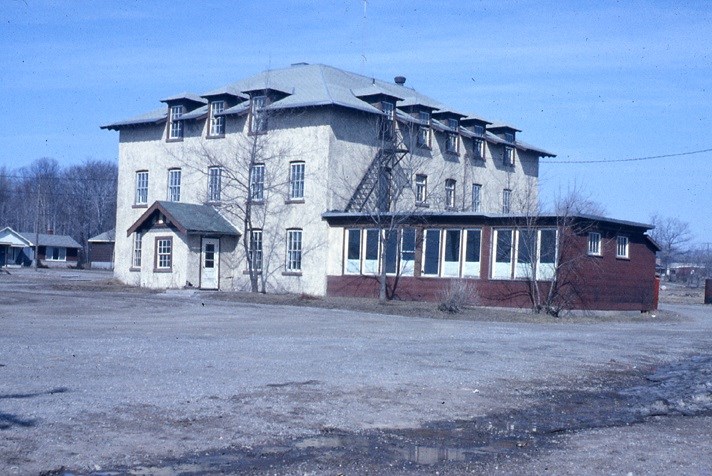From the Archives of the Sault Ste. Marie Public Library:
In the early 1900s, Sault Ste. Marie’s first humane society was founded. The process of creating the organization started with a meeting of local lawyers, ministers, and other advocates; W.H. Plummer, politician and namesake of the Plummer Hospital, was the first chair.
But this article isn’t about the humane society. This is about the Children’s Aid Society.
You see, the goals of the humane society were twofold: to prevent cruelty toward animals and to prevent cruelty toward children.
In 1904, the group split. The Children’s Aid Society of Algoma was officially started, in no small part thanks to John Kelso, a Toronto journalist and activist who was hired by the provincial government to establish the organization.
Meanwhile, a humane society dedicated solely to the protection of animals would not become a reality until 1925.
The Children’s Aid Society developed more structure and organization. At their annual meeting in 1905, they elected their first president, John Dawson, who joined council members Mrs. J.Y. Turner and Minnie (Garrett) Ewing. Their role included fundraising, finding foster homes and talking with children and their families.
In 1910, the group brought in a minister, J.P. Reed, to help establish operations and work as an inspector. It was under Reed’s guidance that the Children’s Aid Society opened its first shelter in 1911. The purpose, according to a Sault Star article, was to “[take] care of the wards of society till they can be adopted out… [and board] several children under rather extraordinary circumstances.”
These extraordinary circumstances included cases when the children’s mothers were ill or placed in asylums.
During their first year of operations, they reported on the number of children they had assisted – including six Italian children, “five of whom [were] as good children as we have had to deal with.”
Also assisted by the Children’s Aid Society was a teenage girl who had been married at 14, run away from her husband at 16, and was described as “too far gone to help very materially.”
Other notable wards of the Children’s Aid Society included the children of Angelina Napolitano, the Sault resident who infamously murdered her abusive husband; all four of her children were eventually adopted out by CAS.
Their initial shelter location was in a house on King Street, followed by one on Biggings Avenue. However, due to an increasing demand for space, they searched for a new location. In 1912, they purchased what was previously the Wawanosh Home for Girls, a residential school located on what is now Great Northern Road. After the CAS’s purchase of the building, it became known as the Children’s Shelter.
A report published in the Sault Star in 1930 gave a clearer idea of how the shelter operated. At that point, it housed 55 children. Forty-three were wards and the rest were held for disciplinary reasons or boarding there. The shelter had cows and poultry on the property and the conditions were described as “quite satisfactory.”
Another article from the same time recounted the experiences of a young woman who had stayed in the shelter. Despite walking in “wrapped in a mental determination to think the worst of everything,” she found herself won over by the kindness of the workers, the good food and the pleasant atmosphere. She described Halloween parties and people coming in with moving-picture machines to play shows — it was a “real home,” she said.
The system was far from perfect, however. In 1927, for example, a 12-year-old Sault Ste. Marie boy made headlines when he survived on his own for 76 days in a cave in the Goulais Bay area. He had been taken from the children’s shelter to work on a farm, and the farmer had beaten him to the point where he feared for his life. He fled and survived on his own, stealing food, until he was found. The farmer was brought up on charges, and the boy returned to the children’s shelter.
The children’s shelter ran until 1955. With the passing of the Child Welfare Act, the move was toward fostering, rather than children’s shelters. The Children’s Aid Society continued its operations but opted to refocus its attention on foster care rather than on the running of institutions.
Each week, the Sault Ste. Marie Public Library and its Archives provide SooToday readers with a glimpse of the city’s past.
Find out more of what the Public Library has to offer at www.ssmpl.ca and look for more Remember This? columns here.
